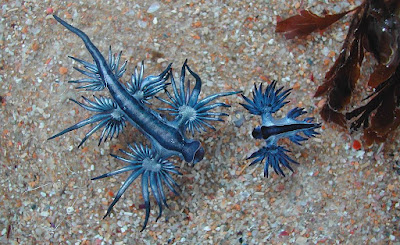kw: book reviews, nonfiction, epidemiology, airborne pathogens
When I saw the title, Airborne: The Hidden History of the Life we Breathe, by Carl Zimmer, I imagined a survey of the microorganisms that make their way into the air. Instead I found a historical survey of certain attitudes that the medical establishment has held, primarily a stubborn denial that bacteria and viruses and other micro-pathogens can travel long distances along with the air. By the end of the book, it appears that this denial persists to this day alongside an ever-strengthening view that airborne spread of disease is of paramount importance. I say "appears" because in the political climate of the past five years, the great majority of clinicians and epidemiologists have judged it prudent to say as little as possible about it. Political matters are so hyper-polarized these days that they taint or contaminate every aspect of national life.The term "Covid-19" does not appear until the fifth of five sections of the book, on page 350, eight pages into the chapter "Disease X". Beginning on page 345 the virus is called SARS-COV-2. This is a curious inversion of time: I don't remember learning the name SARS-COV-2 until more than a year after the WHO (as reported on p 350) announced that the name of the disease would be Covid-19.
The first 340 pages of Airborne present a blow-by-blow (-by-blow) history of the small number of researchers who studied airborne microbes for decades and yet died or retired without their findings being recognized as at all relevant to the prevention or treatment of disease. This in spite of the fact that non-medical folks (darn near everybody on the planet) recognizes that, just as dust and smoke can be carried miles and hundreds of miles by wind and even breezes, so must the microbes which are ever-so-much smaller and lighter.
These days, I sometimes marvel at how clean the air in my house is. When the sun shines through a window, I'll see scattered specks of dust in the sunbeam, but I recall that in my childhood a sunbeam was really a beam, so dense it appeared solid. This was considered normal in the 1950's and before. We dust areas like the top of the piano weekly or monthly; it used to be a daily task. When I would catch a childhood disease such as measles, mumps or chicken pox, my mother would say, "Well, if you can see a sick kid, his germs can get to you." Forty years later, before an effective vaccine for chicken pox was developed, we sent our son to visit a friend who was sick with chicken pox so he could catch it. That is one disease that is deadly to adults but kids just shrug it off (and scratch a little).
It was almost laughably predictable that Mr. Zimmer would make Anthony Fauci into a semi-hero. On my part, I count President Trump's second greatest mistake to be his failure to either fire or sideline Dr. Fauci after their first televised appearance together, when the doctor contradicted nearly everything the President had to say (…and the greatest mistake was initiating the practice of "stimulus"; it gave his successor's administration "permission" to "stimulate" us into a 30-trillion-dollar increase in the national debt). I began to designate "Dr Fakey" from that press conference. And when he said, "I am Science", he proved that he had lost connection with reality. Mr. Zimmer partially redeems himself by noting that Dr. Fauci was shunted aside by the Trump administration, months too late, and he does point out that Dr. Fauci and much of the medical establishment was motivate initially by the shortage of semi-effective masks, to tell the public not to mask. Later lies, however, are ignored.
Just by the way, I got N-95 masks from a hardware store; they are excellent dust masks! But no matter what masks people used in the 2020-2022 time frame, I never saw another person wear a mask correctly. I know what it takes to make a mask fit so that I can mow the lawn without choking half to death; I am very sensitive to grass clipping dust. But it happens that viruses such as SARS-COV-2 and influenza and the common cold are in these masks' "sour spot" (the opposite of a sweet spot!): too small for pore size to catch them and too large for electrostatic capture to be highly effective. N-95 means the "sour spot" still can stop 95%, but that means 5% gets through, which is enough for most people to get sick anyway. And an ill-fitting N-95 mask is really about an N-10 mask, or worse. OK, enough of that diatribe.
What I hoped to see in the "Disease X" chapter and its successors was an even-handed history. Sadly, too much was left out. The Chinese doctor in Wuhan who worked on gain-of-function research into coronaviruses, and published the results in prestigious journals such as Science, is never mentioned. Ditto the fact that her research was bankrolled by Dr. Fauci, using an accounting trick to get around a prohibition by President Obama. I do not mention the doctor's name, since doing so is a sure ticket to "cancellation", even today. The five state governors who required nursing homes to take in patients infected with the virus are never mentioned. The illness and deaths caused by their policies form the bulk of the First Wave of Covid-19. No mention is made that the Wuhan Wet Market doesn't have bats for sale. I could go on…
Even though I saw where the book was going by the 50th page or so, I read it all. Carl Zimmer writes very well and I generally consider him, if not a wholly honest journalist, one of the better ones. This book falls short of his usual standard. I don't consider the time wasted, however. Though the book's main text is 414 pages, at least 340 pages of it contain interesting and useful history.


























